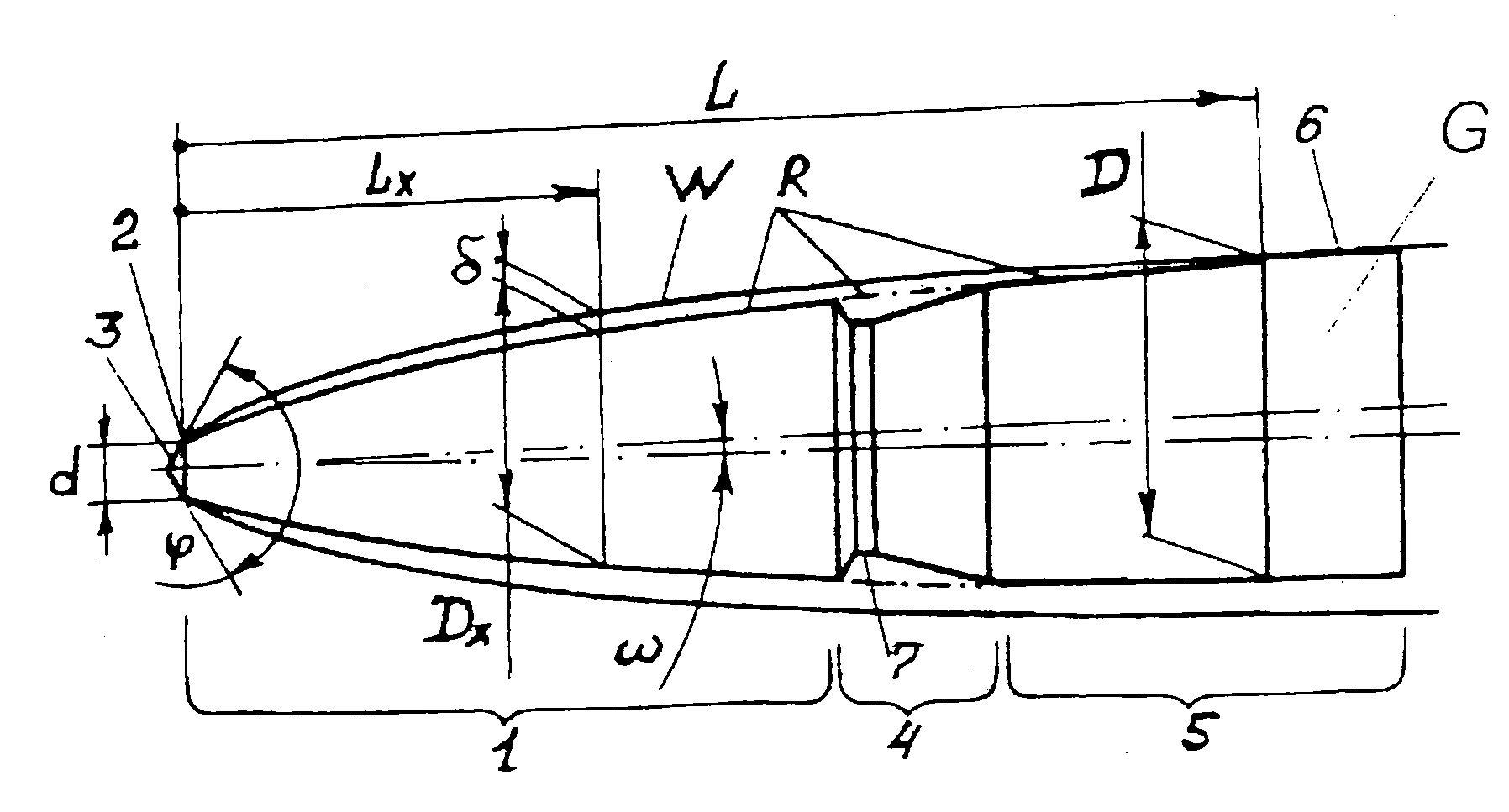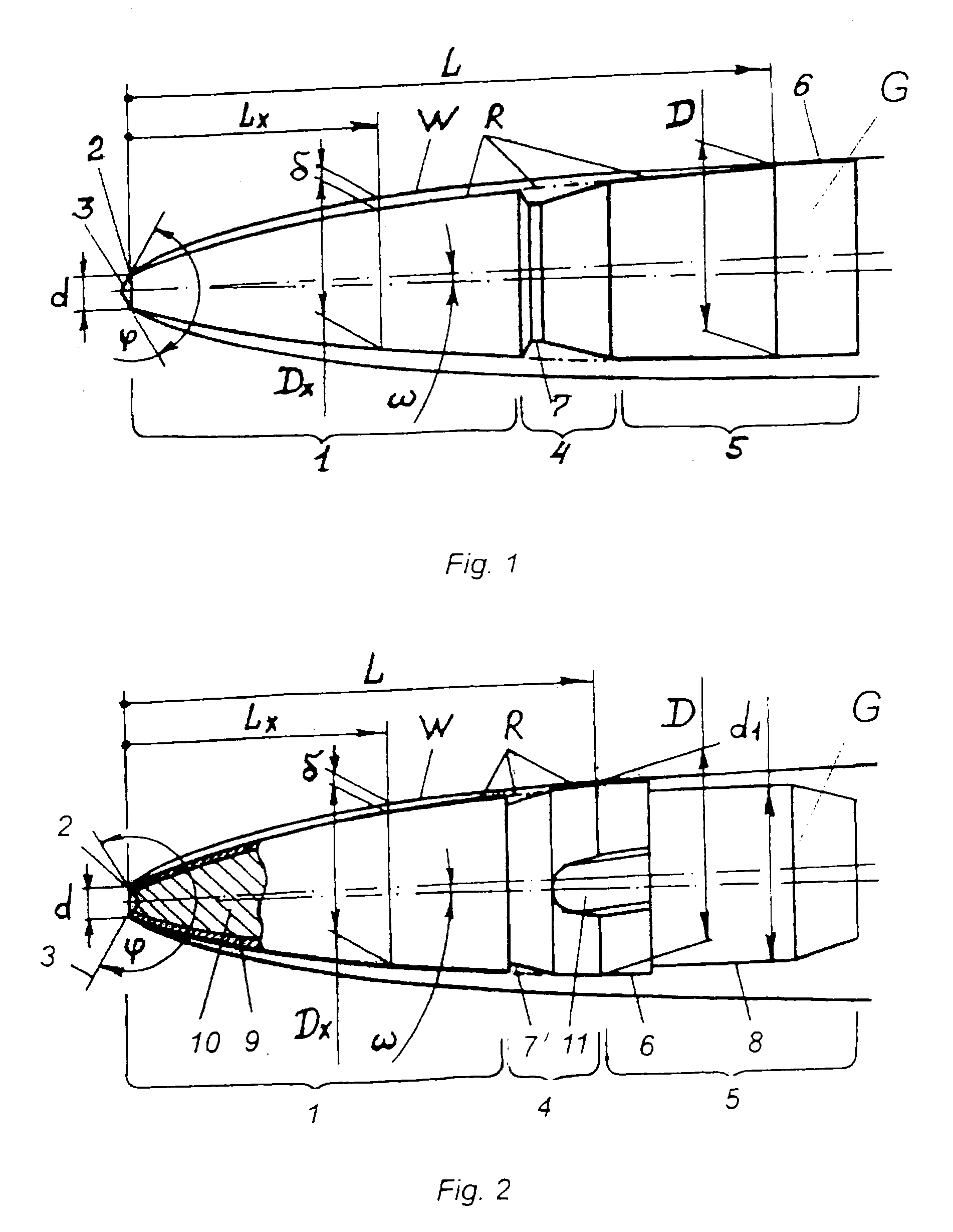Cavitating core
a cavitating core and core technology, applied in the field of cavitating cores, can solve the problems of reducing the effectiveness of underwater targets
- Summary
- Abstract
- Description
- Claims
- Application Information
AI Technical Summary
Benefits of technology
Problems solved by technology
Method used
Image
Examples
Embodiment Construction
The cavitating core G consists of a head part 1 conjugated along the cavitating edge 2 having the diameter d with a secant nose surface 3, a central part 4, and an aft part 5 with a cylindrical gliding surface 6. The core caliber D is less than the barrel bore inner diameter measured at rifling fields. To prevent deformation of the conical nose surface 3 its top is rounded. For fixation in a discarding sabot the central part 4 has a groove 7.
The current diameter Dx of the cavitating core enveloping contour on the current length Lx from the cavitating edge 2 to the caliber D on the length L (excluding groove 7) coincides with the enveloping contour R that corresponds to the function:
Dx=d×[1+(Lx / d)×(2×sin φ / π)1 / N]N, where: d=1.75 mm, φ=90°, N=0.50.
The cavitating core contour R and the cavity contour W match in such a way that in the cavity the core rotary angle ω makes up less than 1.8°, and between the contour W and the core contour R there retains a gap δ of less than 0.5 mm smoothl...
PUM
 Login to View More
Login to View More Abstract
Description
Claims
Application Information
 Login to View More
Login to View More - R&D
- Intellectual Property
- Life Sciences
- Materials
- Tech Scout
- Unparalleled Data Quality
- Higher Quality Content
- 60% Fewer Hallucinations
Browse by: Latest US Patents, China's latest patents, Technical Efficacy Thesaurus, Application Domain, Technology Topic, Popular Technical Reports.
© 2025 PatSnap. All rights reserved.Legal|Privacy policy|Modern Slavery Act Transparency Statement|Sitemap|About US| Contact US: help@patsnap.com



